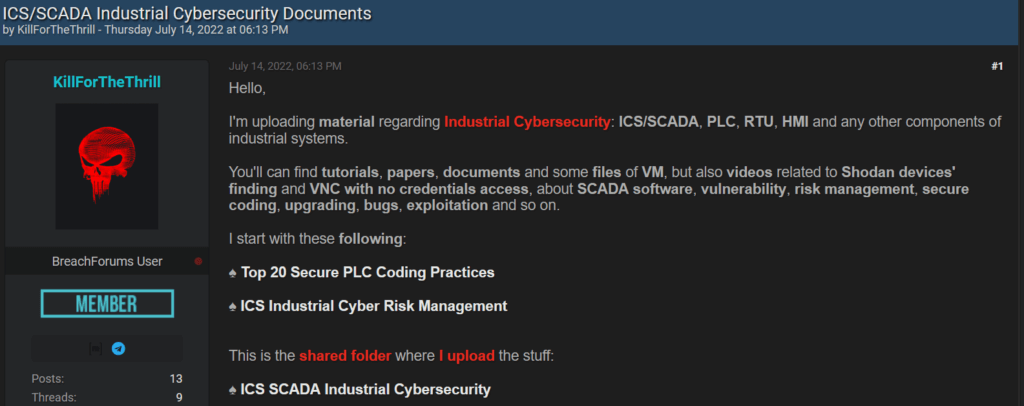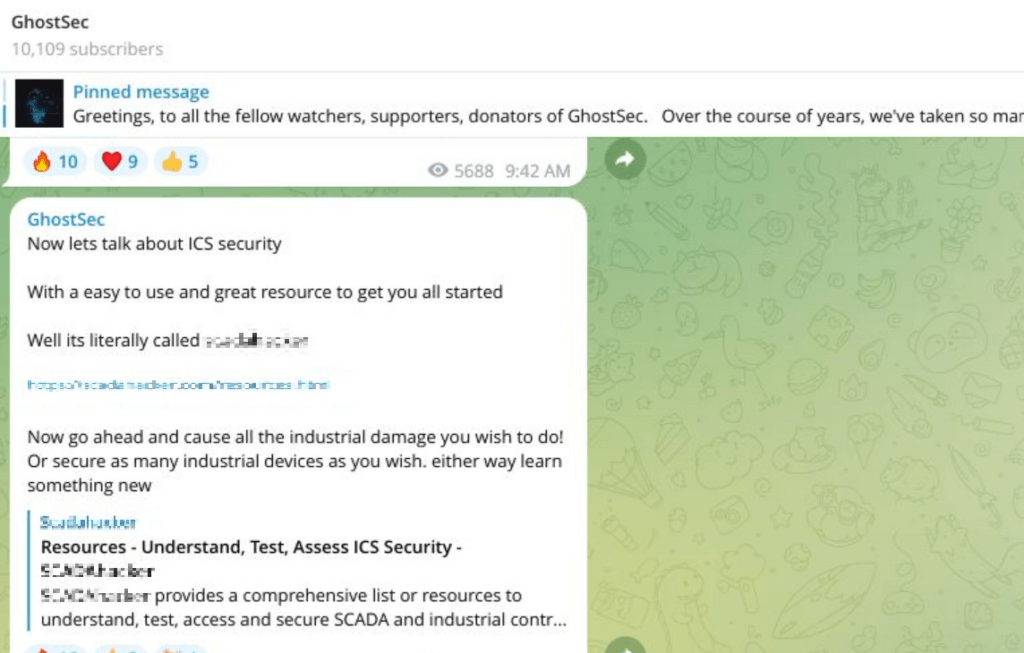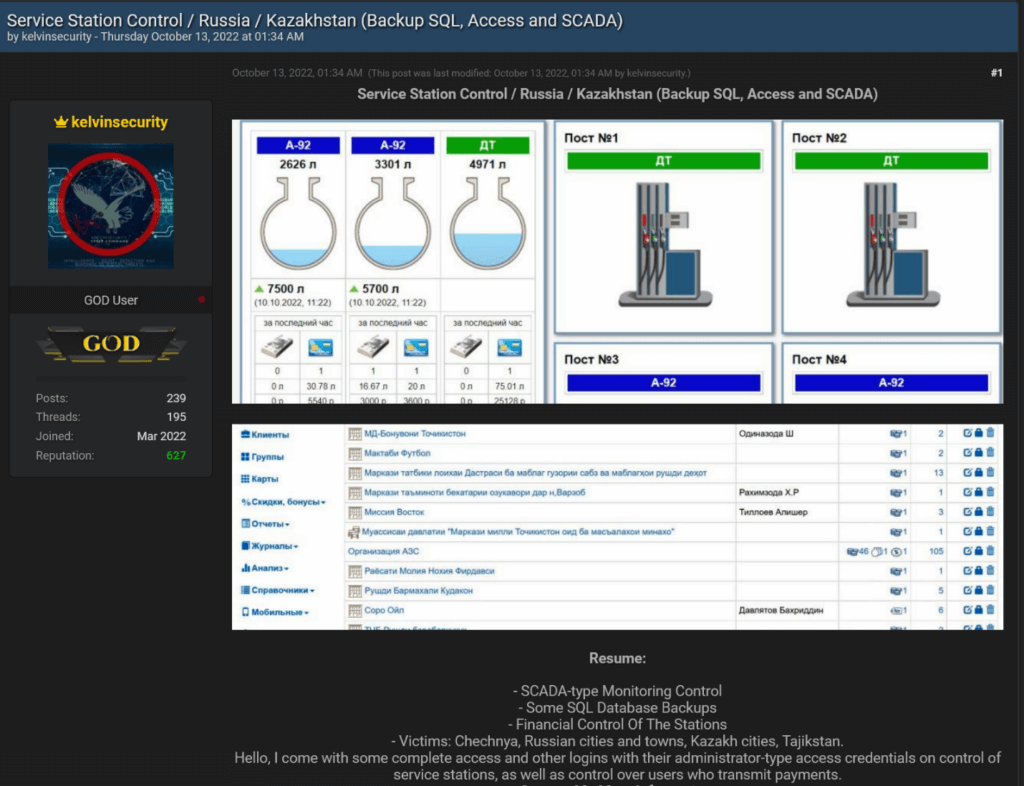ICS attack classifications: differentiating between cyberwarfare, cyberterrorism, and hacktivism
In this article, we build the bridge between the conceptual field of International Relations and the terminology employed by cybersecurity practitioners. We will translate all these understandings into real-life applications to empower the analyst to properly classify clusters of malicious activities. This way, we as a community strengthen our analytical capabilities to better assess collected intelligence material. All in all, qualified multi-skilled threat intelligence teams and solutions are strong foundations on which companies must rely to make informed security and business decisions.
Get ready to unlock the mysteries of the digital battlefield, where lines between virtual and physical realms blur, and the stakes are higher than ever before.
Bridging the gap between cybersecurity and International Relations
The cybersecurity industry often adopts certain terminology and conceptualization that is not spontaneously translated into other fields of knowledge. Therefore, practitioners from different areas investigate converging themes but fail to communicate with one another. So here we shed light on topics of confluence between cybersecurity and International Relations, as one can benefit from the other.
Are state-sponsored groups cyber proxies?
In the industry, we discuss the activities of state-sponsored threat actors, often personified in the notion of Advanced Persistent Threat (APT) groups. These understandings are not novel in the history of geopolitics; the employment of mercenaries is a widely acknowledged practice. Contemporarily, the adoption of proxies and the emergence of proxy wars rather than resorting to traditional state-waged total wars is an adopted practice that allows states to circumvent international law. The logic can be, and gradually is more and more, applied to the cyber realm. What academics would call cyber proxies – and what the industry calls state-sponsored threat groups – are essential actors in the translation of geopolitical conflicts into the cyber domain, for a series of reasons. For instance, cyber proxies provide added technical capabilities to their sponsors, filling the capacity gap within the state’s apparatus, which makes this relationship costly-effective for the hiring nation. Besides, proxies add a layer of complexity to the accountability process, benefiting the state in terms of international law compliance.
In earlier stages of cyber development, nations would get their hands dirty by directly conducting attacks against geopolitical rivals – Stuxnet is one of the most remarkable examples of such conduct. However, through the years, cyber proxies have proven to be less costly, safer for diplomacy, and more practical in technical/capabilities terms. Thus, an evolutive example would be the attacks against Ukrainian infrastructure and companies conducted by the Russian group “SaintBear” since the beginning of the war between Russia and Ukraine in 2022. This group, likely at least partially state-sponsored, is believed to be behind the destructive WhisperGate attacks that impacted Ukrainian government agencies in January 2022. This last example reinforces the thesis of the increase in cyber proxies’ employment.
Defining cyberwarfare, cyberterrorism, and hacktivism
Part of the cyber threat intelligence’s attribution process involves identifying the threat actor’s objectives. In the industry, standardized vocabulary like threat taxonomies defines a set of potential motivations for attacks and supports the analyst’s comprehension of their object of study. Yet, it does not insulate the field of knowledge from often misconceptions and concepts that might be difficult to tell apart. One example is the categorization of cyberwarfare, cyberterrorism, and, lastly, hacktivism. The imprecise definition of each one of these phenomena, as well as the participation of different kinds of actors in them, lead to a classification mess that is hard to untangle. Two key factors that might determine the distinction between events are the intended goal of an attack and the nature of the perpetrators. Let us move on to definitions.
Only states can wage war. The use of force by other types of actors shifts the nature of the conflict to other classifications, such as riot, civil war, asymmetric war, etc. As only states can wage war, naturally, only states can wage cyberwar. Thus, cyberwarfare must involve two or more state agents. Naturally, it is not easy to determine if a threat actor is part of the state’s apparatus; but for definition purposes, that shall be the understanding.
As for cyberterrorism and hacktivism, more subtle factors come into play. Both activities are defined by the pursuit of an agenda – be it political, religious, economic, you name it – and consequential use of cyberattacks to advance these objectives. The identity nature of the perpetrators of cyberterrorist attacks or hacktivist attacks is the same: both are necessarily non-state agents. This includes cyber proxies and independent actors, who could even be supported by a state – which might oversee their criminal acts, might finance the group, etc. – but they are still not part of the state machine. Then what differentiates a cyberterrorist act from a hacktivist one? The intended goal of the actor’s attacks. Although the two categories are not mutually exclusive, a cyberterrorist act aims to cause disruption and harm, or the threat thereof, likely provoking a kinetic attack, to advance an agenda, or coerce a group to advance said objectives. On the other hand, while a hacktivist attack may also aim for the disruption of services, it does not intend to cause harm.
Finally, one particularity of cyberterrorist attacks is that they target critical infrastructure. The disruption of critical infrastructure is the core element of cyberterrorism, as only attacks with such magnitude could represent an act of violence capable of inspiring terror and pressuring governments into giving in to the cyberterrorists’ exigencies.
Cyber-attacks against Industrial Control Systems
Industrial Control Systems (ICS) and their software element, Supervisory Control and Data Acquisition Systems (SCADA), are prime examples of critical infrastructure control systems that are prone to vulnerability and, consequently, exposed to cyberterrorism. Inflicting significant damage to critical infrastructure raises attackers to an advantageous position of power that might push targets to relent.
But what is comprised under the critical infrastructure umbrella? It is up to each nation to define its national security interests, but in general terms, these are sectors that build up national capabilities. In the European context, legislative bodies have long worked to define the European Critical Infrastructures (ECIs), but based on Directive (EU) 2022/2557 (still under transposition into national laws) the pillars are the energy; transport; banking; financial market infrastructure; health; drinking water; waste water; digital infrastructure; public administration; space; production, processing and distribution of food sectors. In the United States, according to the Presidential Policy Directive/PPD-21, there are 16 sectors understood as critical infrastructure: chemical; commercial facilities; communications; critical manufacturing; dams; defense industrial base; emergency services; energy; financial services; food and agriculture; government facilities; healthcare and public health; information technology; nuclear reactors, materials, and waste; transportation systems; and water and wastewater. Each legislative body judged and formulated EICs based on specific national priorities, but we note overlaps between the European and the North American perspectives. Notably, cyberterrorists have a wide range of potential targets – and, on the other hand, nations have a lot to worry about. Even more worrisome: at least 5 out of the 11 sectors in the European perspective and 8 out of the US’ 16 sectors use ICS management systems. Let us examine that in detail.
SCADA systems are usually employed to control processes in the oil/gas, manufacturing, air traffic/railways, power generation/transmission, and water management sectors. An impactful attack targeting such systems does not necessarily cause destruction solely by opening dams, causing aviation accidents, or exploding a factory. An impactful attack against SCADA systems may wreak havoc by producing failure cascading, for instance – which is possible through a supply chain attack. Some examples of potential attacks against SCADA systems are: “issuing unauthorized commands to control equipment; sending false information to a control-system operator that initiates inappropriate action[;] delaying or blocking the flow of information[;] making unauthorized changes to control system software to modify alarm thresholds or other configurations; and rendering resources unavailable”. We see that not only kinetic or destructive attacks need to be carried out to cause chaos, disruption, and national emergencies.
It is also worth highlighting the role of SCADA systems’ stakeholders when debating risks. It is not only national governments that oversee the administration of such systems for critical infrastructure entities; state, local, tribal, and territorial (SLTT) and private entities are also implicated in defending against attacks targeting critical infrastructure. Then, we have the following situation: it is in the best interest of cyber proxies and cyberterrorists, with all their technical capabilities and financial support, to target critical infrastructure, while we often rely on private actors and SLTT to defend nations’ most critical assets against cyber giants. Something in this equation is clearly off, and we, as societies, are the ones who end up paying the bill. It is exactly in this asymmetrical capability dynamic that lies our most dangerous flaws.

When it comes to terrorism, the word itself gives away that a key component is to instill fear. Therefore, conducting one massive, destructive, isolated attack against ICS might already do the job of spreading a message and subduing an enemy. However, cyberterrorists are likely to engage in hybrid attacks when targeting critical infrastructure. It means that attackers might (in a short time frame) conduct DDoS attacks against related targets; publicize that they have acquired access to SCADA systems (usually sharing some screenshots, leaking documents, or so); conduct information operations; or employ other techniques that put targets under pressure. Yet, as stated before, these activities are not conducted in isolation: the attacker concretely intends to provoke significant harm as a means to advance a message.
Real-life examples of attacks against ICS infrastructure
All things considered, it is time to showcase some real-life examples of attacks against ICS infrastructure that Outpost24’s Threat Intelligence team, KrakenLabs, have observed throughout the past few years.
GhostSec
“GhostSec” is a highly organized threat group associated with the international hacktivists “Anonymous” network. The group first emerged in 2015 and it is often considered a hacktivist group: aligned with what was discussed in this article, GhostSec intends to cause disruption, but no harm with its actions. Let us analyze some material from the group to assess these claims:

The screenshot above was published on the group’s Telegram channel in mid-2022, in which it claims to have hacked into the ICS infrastructure of Russian electric systems. The infrastructure in question is allegedly the Gusinoozerskaya hydro-power plant in Russia, and according to the news article by the Mirror (shared by the threat group in the Telegram post), the attack impacted the electric supply of the cities of Ulan-Ude and Krasnokamensk. The group claims that they intended to cause a blackout and emphasizes the fact that there were zero casualties involved in the attack, reinforcing their hacktivist nature.

Another example observed was in early July 2022. Although there was no disruptive attack in this case, GhostSec shared a screenshot to prove it had access to the Israeli city of Or Akiva’s sewage stations. The threat group went on to say that the “scale of these attacks will lead to industrial control systems being non-functional, including pump systems, electricity, etc”, implying that this post was more of a threat of what the group can do. According to the newspaper Haaretz, upon the publication by GhostSec, the journalist team reached out to the Israeli National Cyber Directorate, which in turn contacted the Or Akiva municipality on July 07, 2022, but the exposed sewage interface remained exposed – with no required password for access – until many hours later.
Interestingly, but not surprisingly, this team is not only interested in perpetrating attacks themselves. Instead, as they have a political agenda to follow, they encourage and incentivize other threat actors to commit attacks against ICS infrastructure, as per the following figure:

This screenshot, taken from GhotsSec’s Telegram channel, corroborates the practice illustrated by Figure 1, in which cybercriminals share knowledge among themselves on how to conduct all sorts of attacks, in a true community sense.
KelvinSecTeam
“KelvinSecTeam” is a financially motivated threat actor, classified simply as a cybercriminal actor, that since 2018 sells stolen user databases from companies. Although the adversary does not follow a political agenda, it can also deeply impact ICS infrastructure, as seen in the following image:

In the example above, KelvinSecTeam was selling access to the SCADA systems that monitor fuel stations in Russia – besides the already mentioned databases, financial control of the stations, and others. If access to these systems falls into the wrong hands, it entails great safety issues due to what a potential leak of fuel may generate – which is something that cyberterrorists would likely do, as it would cause harm. It is not clear whether this access has been sold, but as it was still available at the forum until its closure, chances are that it has not been commercialized – due to reasons ranging from high prices to a general lack of interest in the product.
From Russia with Love (FRwL)
“From Russia with Love” (also known as “FRwL”) is, at first glance, a hacktivist group that emerged in the context of the Russia – Ukraine war in 2022. After a few months, the threat group started employing the Somnia ransomware against targets of interest, but it would use it as a wiper as, according to a Telegram post, “we removed the decryption function, now the process is irreversible, and the decryption algorithm is just crazy!”.
In the context of the war, security researchers managed to establish a connection between some auto-proclaimed hacktivist groups and the Russian Main Intelligence Directorate (GRU), which makes these threat groups, at best, cyber proxies (when not directly part of the state apparatus). At the time of writing, no piece of evidence consistently can link FRwL to the GRU; however, it is possible that prominent state-aligned hacktivist groups active in Telegram such as FRwL coordinate activities at some level with the GRU – be it directly or through intermediaries.
FRwL usually leaks exfiltrated information obtained from Russia’s opponents in its Telegram channels. However, on one occasion, the adversary implies having targeted SCADA systems belonging to two separate entities:


In the first case, illustrated by Figure 7, the system in question allegedly belongs to Chevron, a multinational energy corporation. FRwL claims to have encrypted all systems, which suggests that the threat group may have employed the Somnia ransomware against the target. In the second case, illustrated by Figure 8, the system in question belongs to a Spanish waste management system. Here, the threat group claims to have messed with all the system’s configurations, leaving it in critical condition. The attacks have not been confirmed by the targets, but both could have posed great danger to affected populations.
FRwL adopts an aggressive approach, and, differently from the GhostSec case in which the hacktivist group openly claims its intention not to cause harm, it is unclear what are the intentions of the former.
Therefore, the classification of this group is highly complex: it could be hacktivism, cyberterrorism, or even work as a cyber proxy.
Final words
As illustrated by the case studies, it is not an easy task to classify complex threat groups within the proposed taxonomy – especially one that bridges the gap between cybersecurity and International Relations. Cyberwarfare, cyberterrorism, and hacktivism are differentiated by a thin line that requires close attention to detail to tell them apart. A takeaway from these considerations is that one must cross-check the intended goal of an attack and the nature of the perpetrators to achieve a clearer vision of the potential classification of the group. This way we avoid falling into easy classifications that might disregard the true intent behind malicious actions and actors. Properly managing threat classification supports our cybersecurity understanding and preparedness as we harden our defense capabilities.
In Threat Context, the comprehensive threat intelligence module of our security solution Threat Compass, clients have access to the daily updated intelligence information about threat groups, their attack patterns, employed tools, exploited vulnerabilities, IOCs, campaigns, and more. Outpost24’s KrakenLabs’ researchers analyze and classify new threats daily, so clients can incorporate the latest developments and trends of the cybersecurity sphere into their business decisions.
